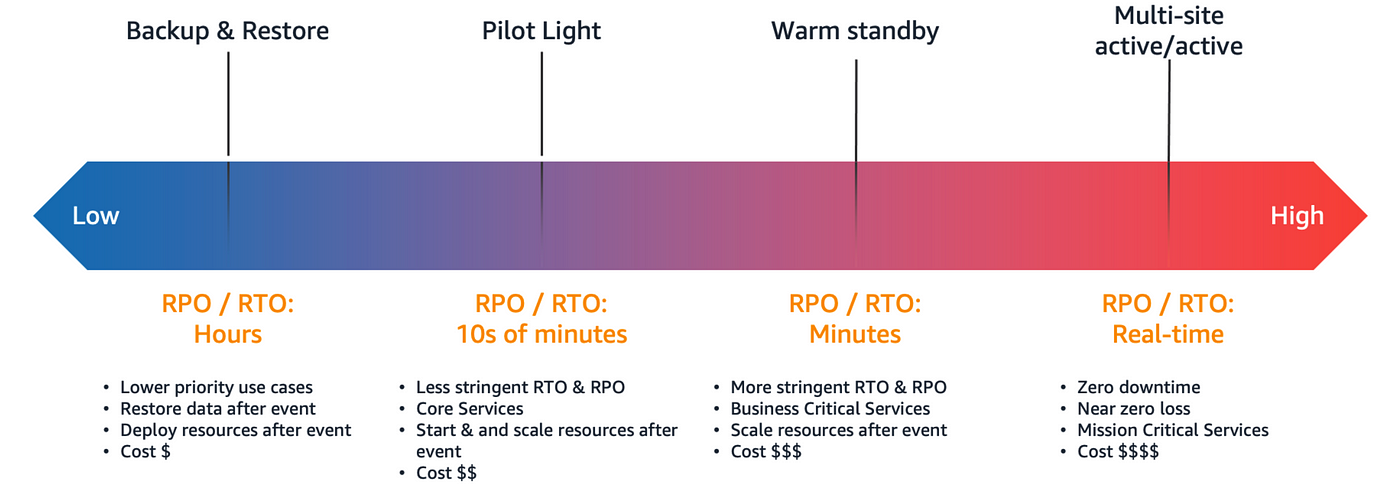- Published on
AWS Disaster Recovery?
- Authors

- Name
- Panuwat Boonrod
- @nilpanuwat

Overview
AWS disaster recovery refers to strategies and services that help maintain operational continuity for organizations managing resources in Amazon Web Services (AWS).
4 Approaches for Disaster Recovery in AWS

1. Backup and Restore
The backup and restore method is the most straightforward disaster recovery option in AWS, involving regular backups of data and applications stored in AWS services like Amazon S3. This strategy is ideal for businesses looking to keep costs low while still maintaining the ability to recover data and applications.
2. Pilot Light
Pilot light is a disaster recovery option where critical core elements of your system are always running in AWS. Non-essential elements are turned off but can be rapidly provisioned when needed.
3. Warm Standby
Warm standby involves running a scaled-down version of a fully functional environment. This smaller, but always-on, environment can be quickly scaled up to handle production loads during a disaster.
4. Multi-Site (Hot Standby)
Multi-Site, or hot standby, is the most robust and costly disaster recovery strategy. In this approach, an identical live environment is maintained in AWS, ready to take over immediately during a disaster. Both the production environment and standby environment run concurrently, ensuring zero downtime.
Disaster Recovery Automation on AWS
Automating DR Processes with AWS Lambda
AWS Lambda is a serverless compute service that lets you run code without provisioning or managing servers. In the context of disaster recovery, Lambda functions can be used to automate specific recovery tasks.
Pros:
Serverless and Scalable:
Lambda allows you to run custom scripts and code without worrying about managing servers, making it ideal for automating specific recovery tasks.
Event-Driven:
By integrating Lambda with CloudWatch Events or SNS, you can trigger automated recovery actions in response to specific events or failures, enabling real-time response.
Cons:
Scripting Knowledge Required:
Lambda functions are written in languages like Python, Node.js, or Java, so a strong understanding of coding and scripting is necessary to create effective automation.
Potential for Human Error:
Writing and maintaining Lambda functions requires careful coding. Mistakes in the code could lead to failed recovery processes or incomplete automation, increasing the risk during a disaster.
Limited Debugging Tools:
Debugging Lambda functions, especially when they are integrated with other AWS services, can be challenging. This could complicate the automation process and lead to unexpected issues during recovery. Fragmented Workflow: Since Lambda often needs to be integrated with multiple AWS services (like CloudWatch, SNS, etc.), managing and monitoring the entire process can become fragmented, requiring attention across multiple AWS console windows or interfaces.